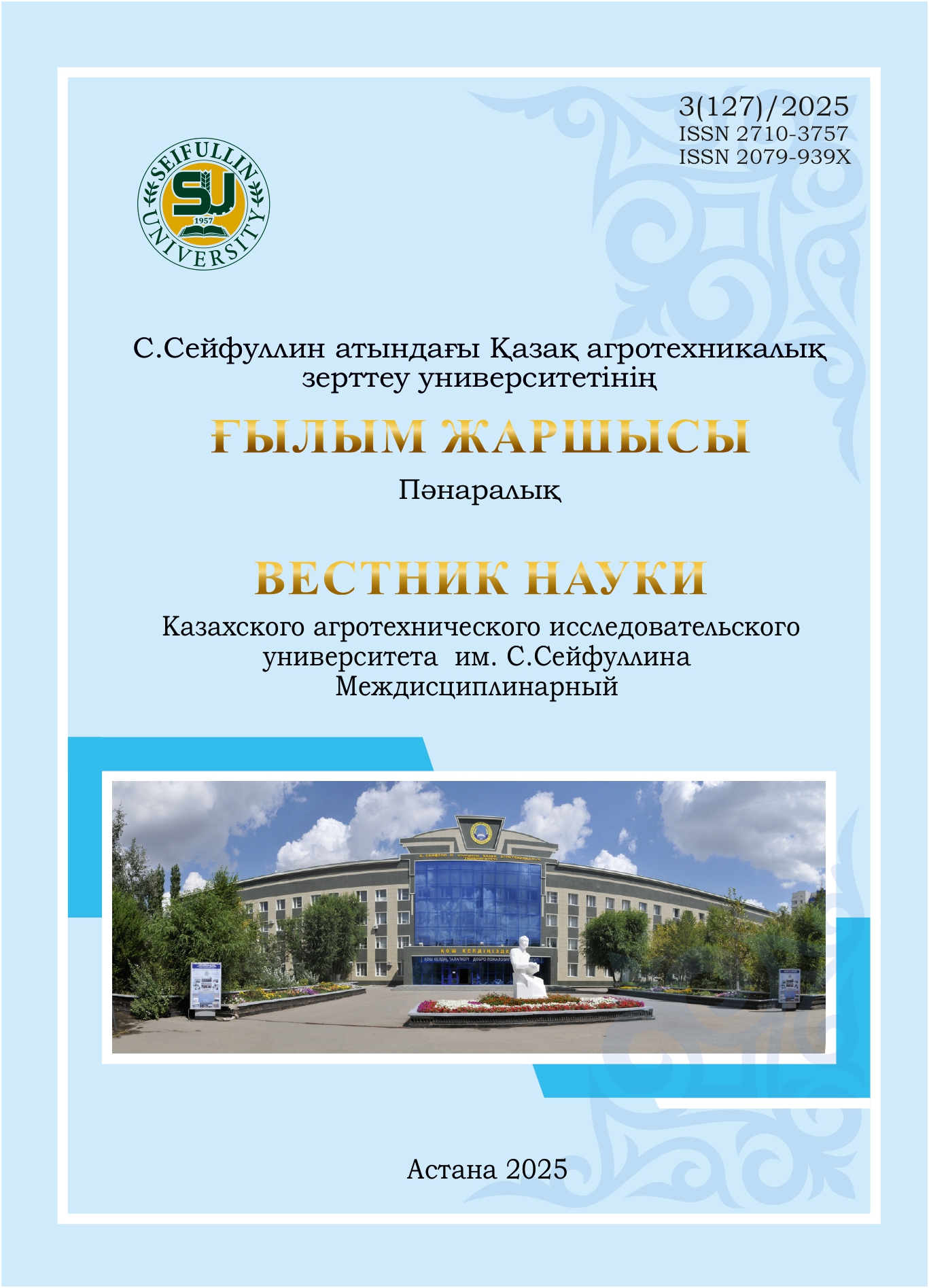Study of micromycetes causing dry rot disease of potatoes in Kazakhstan
DOI:
https://doi.org/10.51452/kazatu.2025.3(127).2016Keywords:
Fusarium; ITS; TEF-1α; dry rot.Abstract
Background and Аim. The potato (Solanum tuberosum L.) is one of the world’s most important food crops, cultivated extensively in more than 159 countries. Despite a high yield potential of 60-100 t/ha, post-harvest losses during storage can reach up to 60%, primarily due to tuber rot caused by phytopathogens. Among the diverse storage pathogens, fungi of the genus Fusarium – known for inducing tuber tissue decay, are particularly aggressive and destructive. This study aimed to comprehensively identify the causative agents of potato dry rot in Kazakhstan.
Materials and Methods. Potato tubers exhibiting dry rot symptoms were examined. Pathogens were identified using morphological and molecular methods, including microscopy, DNA sequencing, and comparison with GenBank data. Pathogenicity was assessed by artificial inoculation of healthy tubers to determine the disease causing potential of each isolate.
Results. Fungal isolates belonging to the genera Alternaria, Talaromyces, Fusarium, Aspergillus, and Penicillium were recovered from potato tubers exhibiting symptoms of dry rot. Species-level identification was conducted using DNA sequencing. Pathogenicity tests on isolates from the genera Alternaria, Talaromyces, and Fusarium revealed that all tested isolates were capable of inducing disease in potato tubers, although the severity of tissue damage varied among them. Representatives of the Fusarium genus showed the highest aggressiveness, causing complete decay of tuber tissues within a two-month incubation period. The re-isolation of these fungi from infected tubers followed by morphological and molecular characterization, confirmed their consistency with the initial strains, thus fullfilling Koch's postulates and establishing the pathogen disease relationship.
Conclusion. Phylogenetic analysis of Fusarium isolates revealed their genetic diversity, with Distinct species forming separate clades. This demonstrates the reliability of multilocus analysis techniques in species delineation. The ITS and TEF-1α markers confirmed that the isolate of F. sporotrichioides, obtained from Kazakhstan, grouped with a reference epitype strain, confirming its taxonomic identity.

